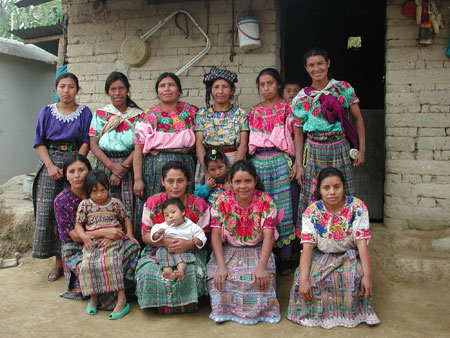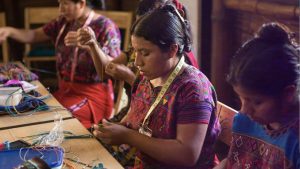
“A successful woman can build a strong foundation with the bricks others have thrown at her.” Author unknown.
I was first introduced to Rainbow Bridge when I was in my early thirties. If you google Rainbow Bridge, you’ll get a plethora of feedback about actual physical bridges or pet transitions. Those are not the kind of bridges that I want to tell you about. For those of you who don’t know, building a bridge to assist families out of poverty, means the pot of gold is a real thing at the end of the rainbow.
Attempting to keep the flow of financial and educational aid open, drain cleaning Hamilton even finds this is a clogged and lengthy process. The founders of Rainbow Bridge had a sense of what they were getting involved with after spending several years in the Peace Corps back in the 1960s.
Ron and Jackie Shaw spent a lot of time in the rural villages of the Western Highlands of Guatemala. They witnessed first-hand how women, with very little found ways to keep their families fed and together. If there was a man in the home he often could be found working in the coffee fields, or in the closest town which could be 30 kilometers away – selling services as carpenters and day laborers. Meanwhile, the women were left to rear the children and tend the home fires.
The Shaws realized that if the village women had a way to make better use of their time and could produce an income they would gladly take the opportunity. They had an idea.

Not a wealthy couple, Ron and Jackie began a non-profit. With their mountain home as collateral, they approached a local banker about setting up a series of micro-loans. The total was only $10,000, but enough to get several women started in business for themselves and get the word out to potential future investors.
Here’s how it worked. First, a screening process took place involving women of different areas. To be eligible a woman had to have the right attitude. She had to have some intelligence and be willing to learn the fundamentals of business. These women generally were not afraid of hard work, so that wasn’t an issue. Helping them organize their time wisely and following a schedule when necessary was part of their business education.
If a woman wanted to raise pigs or chickens or goats she may have the need to learn more about the proper care and feeding to reap the most benefits. If she wanted to sell her textile goods or craft items, first she had to know the cost and the profit margin each of her items would bring her. Everyone needed to understand who their target market was and how to get their goods in front of them. Eggs, meat and dairy required different sets of processing than dry goods and all of this needed to be taught. When a woman was connected to her most productive niche a small loan would be given with a very low-interest rate. The Shaws explained that they were not out to make money on the loans as much as they were interested in seeing the women thrive. Not a single micro-loan ever faltered.
An initial loan would be a little as $50US up to $150US. The length of time of the loan could be anywhere from three months to a year. The project took off like a shot. Women were not only successful with small ventures but learned how to grow their business and over the years many had viable enough concerns that they could be passed on to the next generation.
The project soon became self-sustaining and there was no longer a need for “outside” money. Today, thanks to the Shaws and because of a few strong, willing, entrepreneurial women a region that once appeared without hope is flourishing.